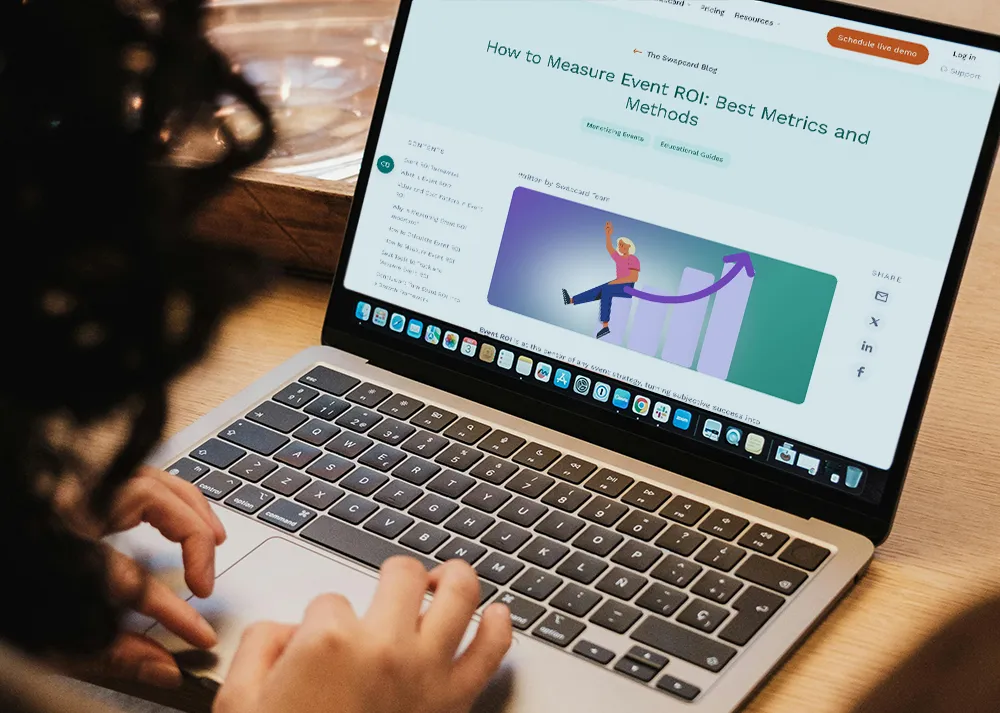Event Management Simplified: 7 AI-Powered Strategies
Event organizers know the drill all too well: the shift into high-alert mode, juggling all sorts of trade show challenges from a few days before the event starts until a few days after it wraps up. It's a non-stop routine that leaves little room for strategic thinking and can lead to missed opportunities for optimization and growth.
But what if there was a better way? What if we could use artificial intelligence (AI) to help with many of the event management tasks that occur during the event, saving you time and making your life easier? We’ll show you how!
This is just one chapter of our comprehensive ebook on AI in the events space. If you're looking for more ways to increase event efficiency and spice up your events, make sure to check out the full guide!
1. Optimize Logistics
Using AI, you can quickly pore through complex data to help determine the best channel to promote your event happenings, the ideal time to send emails and notifications, and the services or vendors that have the most potential appeal to attendees.
2. Match Attendees with Interests/Like-Minded People Onsite
AI algorithms can analyze attendee profiles and match them based on interest, role, position, industry, and topics. Using either wide open or organizer-defined criteria, you can set up matches for attendees prior to them going onsite. It’s one less thing for them to do, and it’s a great start to their event, knowing that there are people out there just waiting to connect with the touch of a button. AI can also match attendees to exhibitors based on interests and preferences, leading to more qualified meetings and increased exhibitor ROI.
.avif)
3. Create Custom Questions for Event Moderators
Preparing to moderate a session often requires valuable time reviewing topics, getting seed questions from speakers, and brainstorming new questions and angles of discussion.
Why not let AI do that for your moderators?
ChatGPT, Bard, or Writesonic can generate questions that are related to the overall theme of the event as well as the specific topic of the speaker’s session.
4. Personalize Attendee Journey
Once an attendee is registered and has completed their profile, artificial intelligence can help build a program for them that includes stops both inside and outside of the event.
In addition to selecting sessions, meetings, and vendors/services that may be of interest to the attendee, it can also suggest local attractions, restaurants, and sights to see, becoming an indispensable tool for the entire duration of their stay.
5. Monitor Real-Time, In-Event Analytics
Trying to monitor everything that’s going on while your event is taking place (conversations happening, survey responses, social mentions) can be a real challenge.
Use AI to keep tabs on submitted session surveys, social media listening, and event-specific chatter. This allows you, as the event organizer, to have a solid feel for how the sentiments are trending and to make adjustments in real-time if necessary.
.avif)
6. Implement Chatbots & Facial Recognition
AI-powered chatbots answer questions and provide directions, taking a lot of the burden off you as an event organizer and freeing your support staff up to work on more complex and nuanced problems.
WORD OF WARNING:
C-Level execs LOVE chatbots. On paper, they complete the task, get answers quickly, reduce the manual burden on employees, and lower costs— it seems like using chatbots would be a no-brainer, right? But in real life, people HATE chatbots.
A recent study shows that almost 80% of people prefer interacting with real people via chat to a chatbot. Before using a chatbot as the main solution for your big event, test it out at a smaller-scale event to gauge effectiveness and attendee response.
Want to give your attendees a more exciting welcome? Try using facial recognition for both check-in and session scanning, reducing the need for badge scanning and physical tickets.
AI-based facial recognition technology can instantaneously search databases of faces and compare them to a detected face to help identify the individual. Of course, ensuring your attendees are aware of the technology's use and addressing privacy regulations and concerns is essential.
.avif)
7. Enhance Translation and Interpretation
Ensuring attendees are actively engaged in the content you’re providing can be a full-time job in and of itself. Make your life a little bit easier (and remove those pesky language barriers) by using a translation tool with AI capabilities to allow attendees to select their native language for any content they’re accessing, whether it’s live discussion panels and breakout sessions or on-demand videos and presentations.
.avif)
Join 12,000 subscribers and unlock industry secrets.
By submitting this form, you agree to receive periodic emails on insightful content related to events and our product, and in accordance with our Privacy Policy. You can, of course, change your preferences or unsubscribe at any time.







.svg)


.svg)
.svg)
.svg)





